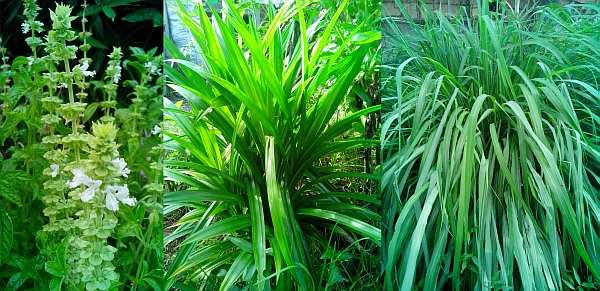Try to recall your younger days when you were so sick and your parents were not around. Maybe you have noticed that your grandparents are preparing something to boil. They have probably told you to drink the bitter-tasting hot water for you to get better and luckily you are fine as if nothing happened. Whenever you eat at fine dining restaurants or simply at your own dining table at home, there is one distinct taste in every dish which makes it more enticing and mouth-watering.

Herbs and spices are derived from different parts of the plants such as leaves, bark, flower, rhizomes, fruits, seeds and even roots. They are famous for their culinary uses such as food flavouring and natural preservatives. They are also utilized as cheaper yet effective treatment and prevention of various ailments. Among these are colds, cough, infections, nausea, pain and inflammation, gout, arthritis, osteoporosis, gastro intestinal disease, heart disease, diabetes, and even Alzheimer’s disease and life-threatening cancer. No wonder that the herbs and spices industry is still being patronized by Filipinos despite of today’s advent of medical advancements. Some health conscious individuals want to get rid of the side effects of drugs brought about by conventional medicine and prefer to go for alternative medicine. Thus, this industry has greater potential in the pharmaceutical or healthcare industry and therefore provides additional income to the local farmers.
Presidential Proclamation 1280 on April 2007 declared an annual celebration called the National Health and Wellness Tourism which prompted the national government agencies to support the endeavors of the Department of Tourism (DoT) and Department of Health ((DoH) to promote health and wellness in the countryside. Under this Proclamation, government agencies are tasked to ensure the proper implementation of programs and activities in accordance with its objective. To support the endeavors of Proclamation 1280, the Bureau of Agricultural Research (BAR) launched the Indigenous Plants for Health and Wellness Program, one of the major R&D programs of the bureau.
One of the on-going projects under this program is the “Production, Processing and Marketing of Herbs and Spices” being implemented by the Southern Luzon State University-Judge Guillermo Eleazar (SLSU-JGE). The project aims to establish demonstration site and garden of herbs and spices within the campus; maintain the growth of herbs and spices that will be used for culinary and medicinal uses as well as for processing of by-products; and extend technical support on production, processing, utilization, promotion, and marketing of herbs and spices.
Through this project, 100 sq. m. demo garden for herbs and spices has been established within the campus and 1,000 sq. m. of demo garden at Tagkawayan Agri-Park which serves as a major demonstration site for BAR-funded projects. Among the herbs and spices planted in the demo sites were ashitaba, ginger, malvarosa, tanglad, asparagus, citronella, purple basil, gynura, marjoram, aloe vera, mayana, rosemary, tarragon, sage, thai basil, sweet basil, turmeric, spearmint, oregano, Italian oregano, dill, java mint, lavender, pandan, peppermint, talinum, cat’s whiskers, and chocolate mint.
According to Mr. Wilfredo L Limgom II, licensed agriculturist who manages the one-hectare demo farm, they had made an intense land preparation because herbs and spices were not able to grow properly. As a result, maintenance of the farm is done once or twice a month. In terms of pest management, Mr. Limgom said that they had fabricated ultraviolet lamps to drive away insects and other pests around. The project team conducted surveys in order to identify the possible and potential by-products of herbs and spices in the local market. In addition, they also created a vermicompost as an additional activity in order to maximize the use of the demo site.
Mr. Cesar Nazareno, project proponent, and the entire team are planning to conduct a tie-up within their colleges to create awareness on the medicinal and culinary uses of herbs and spices and eventually be the beneficiaries of the project. Another plan of action is to encourage students within their campus to conduct research on how to prolong the shelf life of foods through the use of herbs and spices. In terms of effective marketing and promotional strategies, the team is planning to sell their herbs and spices processed products during fiesta and to distribute information and education communication (IEC) materials such as flyers and leaflets.
by Liza Angelica D. Barral, www.bar.gov.ph
